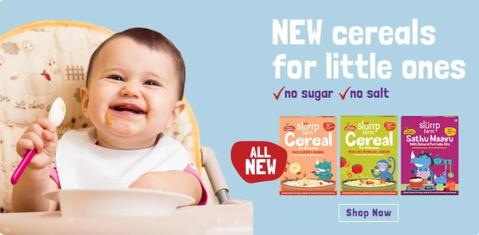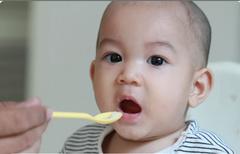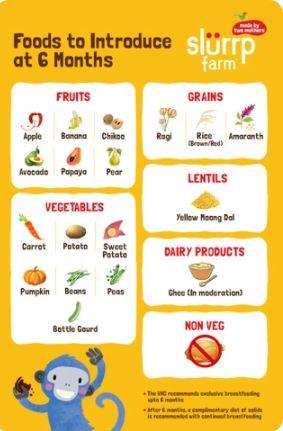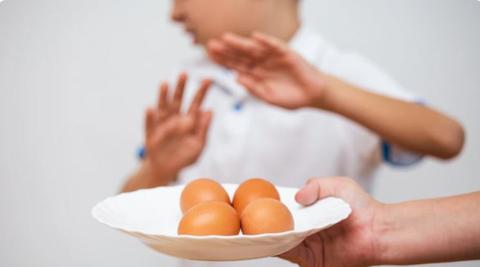By Aswathy Gopalakrishnan
Expert advise by Aditi A Mehrotra
Congratulations on yet another milestone! You have come to the perfect place looking for the best baby weaning foods for your little one, who is all set to start solid foods.
Weaning is a gradual process of introducing additional or complementary sources of nutrition while continuing to breast/formula feed the baby. As a new mom, you may be confused about what works best for your baby. Besides that, you may be receiving pieces of advice from every other person you meet based on their personal experiences. Although, the ideal way to plan the perfect diet is to consult a pediatrician or a nutritionist who has the proper knowledge and experience handling babies and their various issues associated with weaning.
If you are confused about how to start weaning for your baby, worry not. We have sorted it all out for you with the help of a well known Diet Consultant & Nutrition and Health educator, Aditi A Mehrotra.
Aditi has over 16 years of nutritional expertise, based on Ayurveda and naturopathy. Her venture Arney’s Backyard, a nutrition-based learning club, strives to help school children adopt a life-long habit of eating healthy. Read on, and understand more about the best practices of baby weaning through the knowledge Aditi has acquired from her years of expertise.
|
Nutrition In The First 1000 Days Of Your Baby’s Life – Top Tips On Feeding |
Why is milk not enough for a six-month-old baby?
There are few misconceptions that the benefits of breastfeeding stop at a certain point. And this is the reason why babies require complementary feeding for additional nutrients. But, It is not right.
As explained by Aditi, the primary reason to start complementary foods is that babies hit a growth spurt when they are six months old and hence, need more nutrients and energy to support the body. Also, their digestive system matures by this age and is capable of digesting a range of foods. However, doctors advise continuing the breastfeeding along with the solids foods until the babies are grown enough to wean entirely off it.
According to the guidelines of the World Health Organization, the baby needs to be exclusively breastfed for the first six months, followed by the introduction of complementary feed from the sixth month. They recommend continuing breastfeeding up to the age of two or beyond.
|
6-Months Baby Food Chart With First Foods Recommendation And Recipes |
What are the signs to know it’s time for weaning?
The mother’s instincts are the guiding force in assessing and knowing the right time to introduce baby weaning foods. According to our Nutritionist, Aditi Mehrotra, the signs for weaning are:
The baby wakes up way too often at night, and there are interrupted nap times.
1. The baby is hungrier even after milk feeds.
2. The most evident developmental sign is when your baby can support the head and neck straight while sitting up.
The 3P’s in weaning
1. Planning
Do not believe others when they say food before one is just for fun. There has to be a well-planned approach to complementary feeding. First and foremost, make a list of all the foods you wish to include in the very first months of the baby, and note it all down on a diet chart.
2. Patience
Always remember that how much your baby eats is less important than getting the baby used to the idea of eating. Do not rush the process, and patiently follow your baby’s pace.
3. Perseverance
The baby may not show as much interest as you thought for some of the foods you choose. But do not be discouraged. You can give a gap of two to three days and reintroduce the same food, despite the rejection. Baby will surely get used to the taste and accept it with time.
Click to watch the video:
What are the best first baby weaning foods?
Food preferences start early in life. Have you heard of the flavor bridge? Even when you were carrying your baby in your womb, your baby could taste the food you were eating. It means if you have eaten carrots and beans in your pregnancy period, your baby tasted the same. And, if you are going to introduce the same now, the baby would sense the similarity. So, do not hesitate to experiment with all types of food sources. But, introduce them one by one. Let us look at the best and healthy baby weaning foods as suggested by Aditi Mehrotra:
1. Vegetables
Begin with vegetables that are easy to digest and with a naturally sweet taste. You can boil and mash them to make it easy for the baby. The choices for veggies that are best baby weaning foods in India are endless. You can start with pumpkin, sweet potato, potato, and carrot. After that, move on to the gourds – bottle gourd and ridge gourd. And later, add zucchini, yellow squash, beans, and so on to the list. Green leafy vegetables like spinach are also a great option that contains iron and minerals.
2. Fruits
Fruits are a great first choice of early baby weaning food. They are packed with nutrients and have natural sugars. When it comes to fruits, the banana is the safest and favorite option. They are one of the common choices of first baby weaning foods in India. You can mash it and serve right away to your baby. Apples and pears are other options which can be stewed and mashed before serving to the baby. You can also add on peaches, papayas, and mangoes to the list. Take it slow with one fruit at a time. As the baby gets used to the taste and textures and does not show any allergies, you experiment by mixing two or three of them.
3. Grains
When it comes to grains, let us keep wheat and suji at the end. There are multiple safer options for grains available. Rice, oats, ragi, and amaranth are some of the best grains available as baby weaning foods in India and then gradually come on to wheat.
4. Lentils
Lentils are excellent baby weaning foods that are great sources of protein. When it comes to the type of lentils, you can give whole or split. But, make sure to avoid gas-forming varieties such as rajma and chana.
5. Advanced Solids
In addition to the above mentioned foods, you can include the following ones in the diet, as the baby progresses into advanced solid foods. These are based on the suggestions from the pediatrician of my son, and a few other moms who shared their personal experiences.
6. Animal proteins
Well cooked meat, poultry, and fish are excellent sources of protein for the baby. Be sure to cook the food thoroughly and remove any bones. Check with your doctor before introducing them to make sure the baby is ready to eat them. Also, avoid fishes that have high levels of mercury.
7. Egg
Hard-boiled eggs are perfect choices of baby weaning foods. But, eggs are also one of the common causes of food allergies. So make sure to serve it alone to identify the allergy, if any.
8. Nut products
Do not serve whole nuts to babies because they can be a choking hazard for younger children. Nut butter is a safer choice for babies. But, just like eggs, some kids are allergic to nuts. Make sure to introduce them separately in small quantities to help to identify the allergy, if any.
9. Milk products
Yogurt and cheese are baby weaning foods that are good sources of calcium and protein. Make sure to use pasteurized products as pasteurization kills bacteria’s and hence, avoids allergies and infections in the baby.
How much should the baby eat?
Babies are born with very tiny tummies. So, do not expect the baby to eat and finish up whatever you have served. Aditi suggests that even a teaspoon full of rice, or any mashed food up to a teaspoon or two teaspoons, is enough to fill their tummy. It is always better to give nutrient-dense foods in just one serving instead of bulking it up with a lot of fiber. As they grow, their appetite will naturally increase, and you can gradually increase the quantity. Every baby is different, and some need more or less food than others. As long as your baby is gaining proper weight, there is no need to worry.
Are there any foods to avoid giving the baby?
According to doctors and health care proffesionals, the following foods and drinks are not safe for a six-month-old baby and must be avoided to prevent allergies and choking hazards.
1. Honey
2. Whole nuts(Choking hazard)
3. Fishes with higher mercury levels like shark and swordfish
4. Crustaceans like shellfish and prawns (allergy-prone)
5. Unpasteurized cheese
6. Undercooked eggs
7. Caffeine rich foods like tea, coffee, and chocolate
8. Sugary or salty high processed foods or drinks
9. Cow’s milk
Cow’s milk is not a suitable drink until your baby is 12 months old as it does not provide enough iron as breastmilk. But, it can be used in small quantities for cooking or mixed with food from 6 months of age.
How to recognize food allergies?
Cow’s milk, eggs, and peanuts are the most common causes of food allergies, followed by tree nuts like almonds and walnuts, wheat, and soya. Go very slow while including these allergenic foods in the diet and introduce them one at a time. This way, you can identify the source of allergy without difficulty.
My husband has egg allergy and hence, we were careful while introducing eggs to my son because if allergies run in the family, there is an increased chance that your child may develop an allergy. In this case, it’s better to seek advice from a doctor or healthcare provider before offering that particular food to the baby.
The mother’s instincts would know if the baby is in discomfort. The baby may show one or more of the following signs in case of an allergy:
1. Increased irritability
2. Tummy ache
3. Skin rash or hives which are red raised goosebumps on the body
4. Vomiting
If the child disagrees with the food, there would be immediate throwing up of that particular food. In such scenarios, it is best to avoid giving anything orally and seek immediate advice from the doctor.
Conclusion
Remember! Whether you choose a baby-led or a traditional approach, weaning is a gradual process of learning and acceptance for both you and baby. To make mealtimes relaxed and enjoyable, take things slowly, allow the baby to make messes, include them in family mealtimes as much as possible, and have fun along the process. That way, weaning can be a smooth and memorable event for you as well as the baby.
About the author: Aswathy Gopalakrishnan, a mother of a two-year-old toddler who is an absolute foodie just like his mother. I had fun experimenting with different kinds of food purees and finger foods when my son started solids. I followed a mixed approach of traditional as well as baby-led weaning, as I wanted him to be independent, yet have a few ‘Maa ke haath kha khana’ stories to tell as he grows up. Looking back, I could see how much we both enjoyed the journey, and I hope this article helps other mothers to have a similar and fun experience with their little one.





